|
-
21st February 09, 09:18 AM
#81
There was little or no information on the following pictures
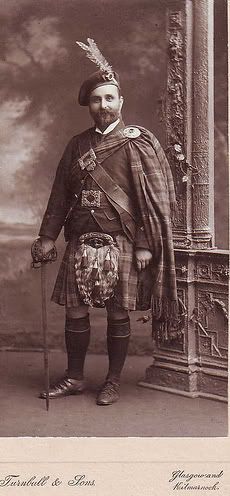
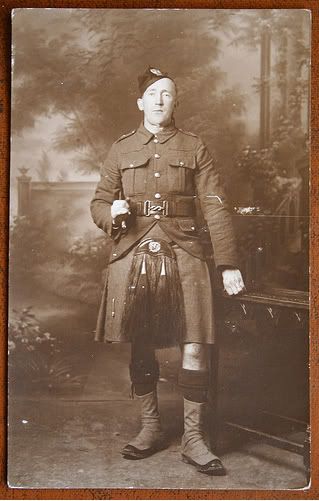
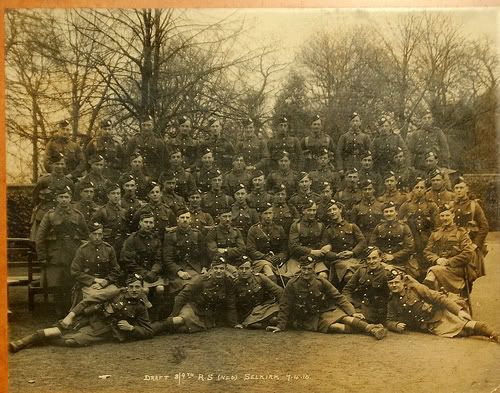
The Black Watch from the Great War
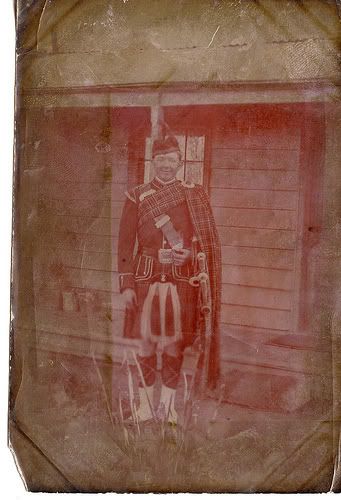
-
-
21st February 09, 09:20 AM
#82
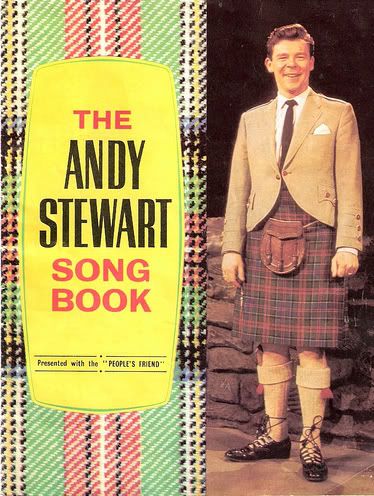
Andy Stewart was born in Glasgow in 1933, the son of a teacher. He moved to Arbroath as a child, and then trained as an actor at the Royal Scottish Academy of Music and Drama in Glasgow.He had several hit singles - "Come in-Come in", "Donald Where's Yer Troosers?", "A Scottish Soldier" (36 weeks in the UK Singles Chart in 1961), "Campbeltown Loch", "The Muckin' O' Geordie's Byre", "The Road to Dundee", "Tunes Of Glory", and "Dr. Finlay" (1965). He is also remembered for being the compere of the The White Heather Club. This was a BBC Scotland television programme that existed as an annual New Year's Eve party (1957 - 1968), and also as a weekly early evening series (1960 - 1968). "Donald Where's Yer Troosers?" was a hit in 1961 and again in 1989. Andy does an Elvis Presley impersonation half way through the song. On the strength of this comedy hit, Andy toured Australia and appeared on the Ed Sullivan show in 1968, doing impersonations of Dean Martin. His skill with different accents is also evident on "The Rumour", where the rumour moves across Scotland and into Ireland, with Andy speaking in a different accent for each place.His albums, such as Scottish Soldier and Andy Stewart's Scotland, were also popular internationally.In retirement he moved back to Arbroath and died there in 1993. Before he died he did a small concert at Arbroath High School (which he had attended) for the pupils. He was also due to appear in a concert at Glasgow's Pavilion Theatre. A sheltered housing scheme in Arbroath, 'Andy Stewart Court', was named in his memory.Stewart died after giving one of his most renowned performances during a Gala Benefit Concert for Children's Hospice Association Scotland. He came to the Usher Hall in Edinburgh from his sick bed to appear for the children, and gave his last ever performance.Stewart's son Ewan Stewart is an actor, whose film credits include Rob Roy and Titanic.
-
-
21st February 09, 09:21 AM
#83
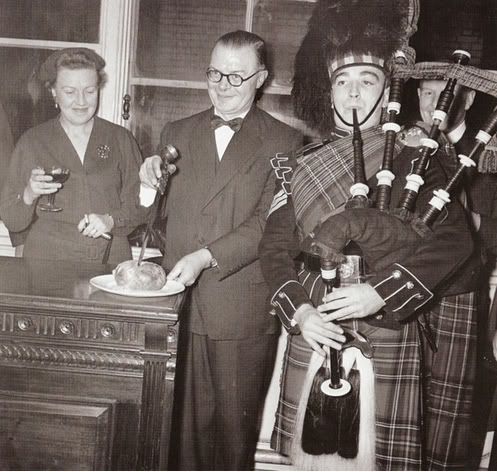
Burns Night, effectively a second national day, is celebrated on 25 January with Burns suppers around the world, and is still more widely observed than the official national day, Saint Andrew's Day, or the proposed North American celebration Tartan Day. The format of Burns suppers has not changed since Robert's death in 1796. The basic format starts with a general welcome and announcements followed with the Selkirk Grace. Just post the grace comes the piping and cutting of the haggis, where Robert's famous Address To a Haggis is read, and the haggis is cut open. The event usually allows for people to start eating just after the haggis is presented. This is when the reading called the "immortal memory", an overview of Robert's life and work is given; the event usually concludes with the singing of Auld Lang Syne.
-
-
21st February 09, 04:11 PM
#84

These are the children of my Great-Grandmother's sister Annie Lucas, who married a Duff. I believe this picture to be circa 1870.
The young kilted lad bears an uncanny resemblance to my 3 1/2 year old son Levi...
"Durum Patientia Frango" (By patience I break what is hard) Clan Muir Muir motto
"Do well, and let them say - Gordon!"
"I don't care to belong to a club that accepts people like me as members" My hero, Groucho Marx
-
-
21st February 09, 06:35 PM
#85
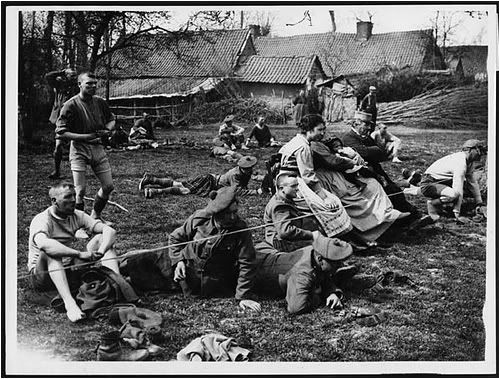
Description:A crowd of onlookers at a sports day organised by the Black Watch Regiment. The spectators include some of the competitors, members of the Black Watch who were not taking part and a number of women and children, possibly from a nearby farm, town or village. A day such as this would have provided some light relief for those at the Front. [Original reads: 'BRITISH OFFICIAL PHOTOGRAPH FROM THE WESTERN FRONT. Black Watch hold sports whilst resting. Competitors and spectators.' Some of events at this particular sports day included a pillow fight, a rifle grenade competition, a gas helmet race, collecting rings using a bayonet and a children's race. John Warwick Brooke, of the Topical Press Agency, was one of two British official war photographers, the first being Ernest Brooks, to be sent to the Western Front in 1916. The demands placed on both men were heavy. They had to take as many photographs as possible, with as much variety as possible; a difficult task for two men covering an army of over two million. Despite this, Warwick Brooke managed to take what would become some of the most memorable images of World War I.
-
-
21st February 09, 06:36 PM
#86

Gordon Highlanders machine gun corps, June 1914. I wouldn't want to be the guy who called it a skirt in front of these boys.
-
-
21st February 09, 06:37 PM
#87
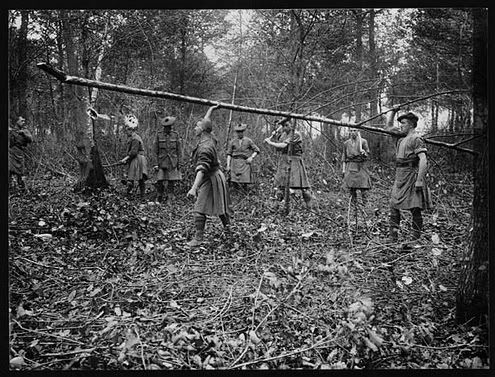
Description:Soldiers in kilts, possibly from a Highland Regiment, working in a wooded area. They appear to be wearing a protective covering or 'apron' over their kilts.The two men in the foreground are carrying a long and narrow tree between them. Some of the men in the background are using axes to fell more trees. The ground is covered with branches and leaves. Many trees were cut down during the war to provide the vast quantities of timber needed for building trenches, bridges, roads and railways. Sawmills were set up behind the Front and whole teams of men, the Canadian Forestry Corps most famously perhaps, worked steadily to meet the huge demand.
-
-
21st February 09, 06:37 PM
#88
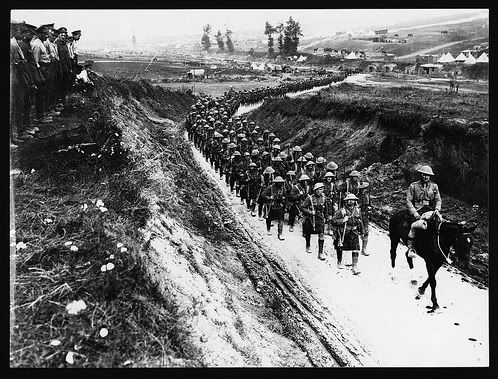
A long line of soldiers from a Highland Regiment marching along a road. They are all wearing kilts and steel helmets, and are carrying rifles. They are being led by a kilted man on a horse. Most of the men have solemn faces. The road they are marching along has a steep bank of earth on both sides. On the left, at the top of bank, there is a line of soldiers watching as the troops march past. There is a camp visible in the background. [Original reads: 'A Highland Regt., on its way to the trenches'. In 1881 there was a restructuring of the British Army which included the creation of four distinct Highland Regiments; The Gordon Highlanders, The Queen's Own Highlanders, The Queen's Own Cameron Highlanders and The Seaforth Highlanders. They were collectively known as The Highlanders.
-
-
21st February 09, 06:38 PM
#89
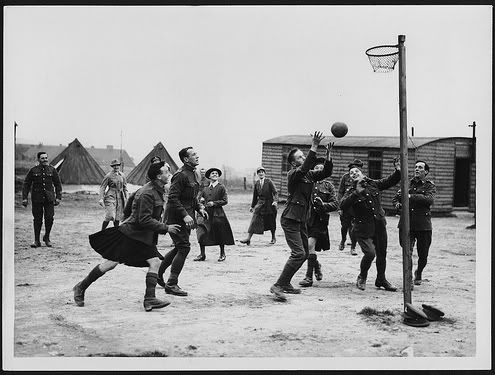
This action shot is thought to have been taken by the official war photographer, David McLellan. The players in the game seem happy and excited. It is unusual to see men and women interacting in images in this collection, making this scene all the more arresting. [Original reads: 'OFFICIAL PHOTOGRAPH TAKEN ON THE BRITISH WESTERN FRONT IN FRANCE. The W.A.A.C.'s in France have responded to a suggestion that they should in their spare time assist in the recovery of convalescent soldiers in hospitals in France, by inviting them to W.A.A.C. camps to take part in sports. Basket Ball.' W.A.A.C. stands for Women's Army Auxiliary Corps. This photograph was taken by David McLellan. Formerly a photographer with the 'Daily Mirror’, a newspaper which led the field in pictorial journalism, McLellan was appointed as an official war photographer in December 1917 along with Tom Aitken whose work also features in this collection. McLellan is especially noted for his work capturing the huge scale of operations on the Front.
-
-
21st February 09, 06:59 PM
#90
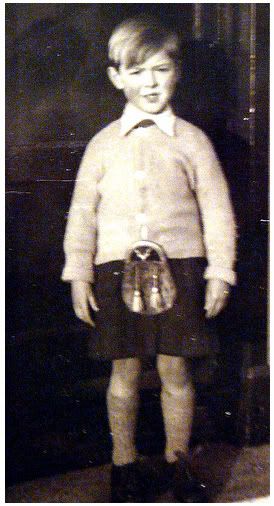
No info on this one, except that it is from sometime in the 50's
-
Similar Threads
-
By Big Paul in forum How to Accessorize your Kilt
Replies: 11
Last Post: 3rd October 07, 06:21 PM
-
By angerli in forum General Kilt Talk
Replies: 17
Last Post: 1st February 07, 02:13 PM
-
By cessna152towser in forum Show us your pics
Replies: 3
Last Post: 22nd May 06, 05:25 PM
Tags for this Thread
 Posting Permissions
Posting Permissions
- You may not post new threads
- You may not post replies
- You may not post attachments
- You may not edit your posts
-
Forum Rules
|
|

Bookmarks